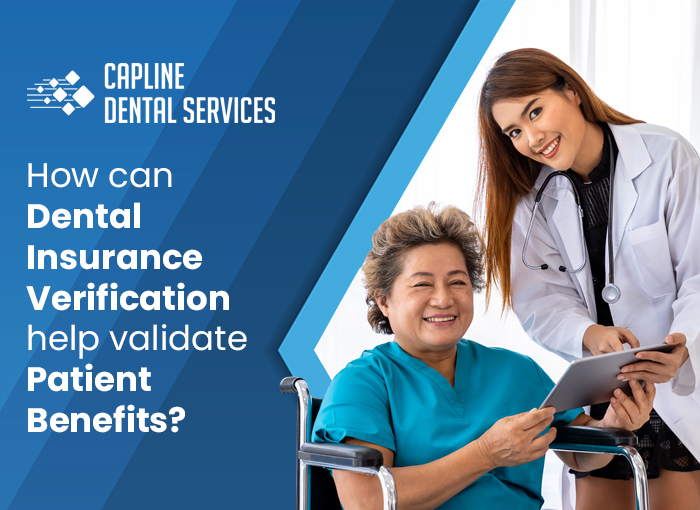
To smoothly run the practice, it's vital to do the patients' dental insurance verification also known as eligibility verification. Initially, it feels like a monotonous job, but later it helps the dental practice avoid headaches. It is sometimes overwhelming due to too many patients, and most don't even know the details about their insurance plan.
Since many patients don't even understand their plan benefits, the dental practice cannot ask questions. Therefore, it becomes essential to validate patient benefits during the appointment.
Eligibility Verification and Patient Benefits
Dental care cannot run smoothly without dental eligibility verification. If the dental practice does not check the patient's insurance benefits, they will not be able to know if the deductible applies to the first visit of the new patient. That will result in a revenue loss or ends up getting less payment from the insurance.
Four insurance payment concepts help the dental practice boost income and patient satisfaction.
For a dental practice to understand each patient's payment plan can only be possible if they know their plan benefits.
Here are a few pointers the practice understands from patient eligibility verification because the benefits change from time to time depending upon if the patient changes the plan or the payor decides to change the patient's benefits.
How to Verify Dental Insurance Benefits
Automated Services: Instead of asking patients about the changes in their plans, it is advisable to use online services for eligibility verification. Login with your account and check the patient's eligibility. In case of doubt, call the insurer to determine stipulations with specific procedures.
Form for in-office eligibility verification: Best method to verify the benefits. The office calls the insurer and fills out the form with all accurate details.
IV Services: It is similar to outsourcing, where eligibility verification services call payors and gets all the eligibility information on your behalf. That allows you to spend more time with the patient.
Fax: Old school method to get a certain percentage of information about different procedures.
Essential terminology in Insurance Verification
Deductible: Some patients assume the insurer will cover cleaning and x-rays 100% throughout the year. The dental office has to ensure where the deductible applies and for what services/treatments to prevent any unpleasant surprises on payday.
Effective benefit date: It is necessary to record the call made to the insurance company. The benefits change in the plan if the patient changes the insurance policies.
Dental benefits effective before: It applies where the patient left their previous dentist and now starts visiting your office. This information is crucial in receiving the payment- how much the new patient benefit period remains and what is covered and non-covered in the plan. That will help the dental office know the maximum amount for treating the patient their insurance covers.
Primary and secondary insurance: Patients' primary and secondary insurance information boosts practice collections, saves practice hours that would go into fixing claims, and build patient trust. If it's their secondary insurance, the company will deny the payment unless you provide the Estimate of Benefit from the primary payor.
For insurance companies to approve, the dental work varies from six to 12 months. For instance, for preventive measures, there is no waiting period. For major procedures, the waiting period varies between six to twelve months. For simple treatments, the waiting period is between three to six months.
Therefore, to prevent payment delay/denial, it is good to know your patient's insurance benefit by conducting the dental eligibility verification before they attend their appointment.